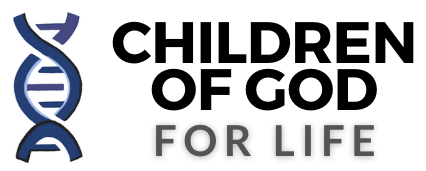http://www.chausa.org/misssvcs/ethics/FetalTissue.asp
July 25, 2005
| TO: | Mission Leaders and Ethicists | |
| FROM: | Sr. Pat Talone, RSM, PhD Ron Hamel, PhD |
|
| SUBJECT: | Vatican Statement on Vaccines Derived from Aborted Fetal Tissue |
A press release being circulated by a Florida-based organization called Children of God for Life indicates that the Pontifical Academy for Life is in the process of issuing a document that considers the moral implications of creating and using vaccines derived from aborted fetal tissue. The document is in response to a letter sent to Cardinal Joseph Ratzinger in June, 2003, by the executive director of Children of God for Life. The Children of God for Life statement contains a link to an English translation of a synthesis of the larger Vatican document that will be published in the near future in Medicina e Morale, a journal published by the Center for Bioethics of the Catholic University in Rome. CHA will monitor for its publication in English.
In the meantime, the synthesis provided by the Pontifical Academy for Life seems to provide the essentials of the larger document. In essence, it confirms statements already made by the United States Conference of Catholic Bishops regarding this issue. Following is a summary of the recent Vatican synthesis statement:
- Vaccines that effectively impede infection and eventually eradicate particular viral diseases represent “a milestone in the secular fight of man [sic.] against infective and contagious diseases.
- Some live-virus vaccines are created with cell lines that have their origin in aborted fetal tissue. Included are certain vaccines for measles, mumps, and rubella (often combined as the MMR vaccine), hepatitis A, chicken pox, poliomyelitis, rabies, and smallpox. (There may be alternative vaccines for some of these viruses.)
- Vaccines derived from aborted fetal-cell lines, despite their demonstrated ability to fight diseases, pose ethical problems because they originate in cells derived from voluntarily aborted fetuses.
- It is morally illicit for anyone to formally cooperate in a voluntary abortion (that is, to approve of or intend direct abortions), including when the intention for the abortion is vaccine production.
- It is also morally illicit for those who, although not formally cooperating in the abortion, cooperate materially by producing, marketing, and distributing vaccines derived from aborted fetal cell lines. This is because their material cooperation could encourage “the performance of other voluntary abortions” for the purpose of producing such vaccines.
- Doctors who prescribe and people who receive these vaccines, despite knowing their origins, “carry out a form of very remote mediate material cooperation” in relation to the original act of abortion (emphasis original). However, their level of cooperation rises in relation to the continued use of fetal cell lines and the marketing and continued use of these vaccines.
- Pharmaceutical companies are obliged to find morally licit means for creating vaccines.
- Doctors, parents, and vaccine recipients are obliged to request and use alternative vaccines if they exist. They should also put pressure on the medical and scientific community to create alternative vaccines that do not raise ethical problems. Hence, there is a grave responsibility to use alternative vaccines and to conscientiously object to ethically problematic vaccines.
- For the vaccines that currently have no alternative, their use is morally lawful “on a temporary basis” and “insomuch as is necessary” to ensure the health and safety of one’s self and the community. This lawful use is “justified as an extrema ratio [extreme reason]” that comes in the “context of moral coercion” because no alternative exists for parents “who are forced to choose to act against their conscience or otherwise, to put the health of their children and of the population as a whole at risk.
- It is right to abstain from using morally problematic vaccines (for which there are no alternatives) if it can be done without causing children, and indirectly the population as a whole, significant risks to their health.
The following links may be helpful for further understanding this important issue.
- Children of God for Life press release (which includes link to Vatican synthesis statement)
- USCCB Fact Sheet: Embryonic stem cell research and vaccines using fetal tissue
- USCCB Life Insight, Aug-Sept 2001 issue

I volunteered to take part in the Novavax study back in Early 2021. I was thrilled that an ethical option…
This article is dated 13 Aug 2021.
God bless you both and your growing family! Your work has been appreciated beyond words. I look forward to your…
Science and medicine proclaim to want to save lives with sick innovation and research like we just read about but…
Want information to be in English
Dear GOD! Have mercy on this. Makes me want to vomit.